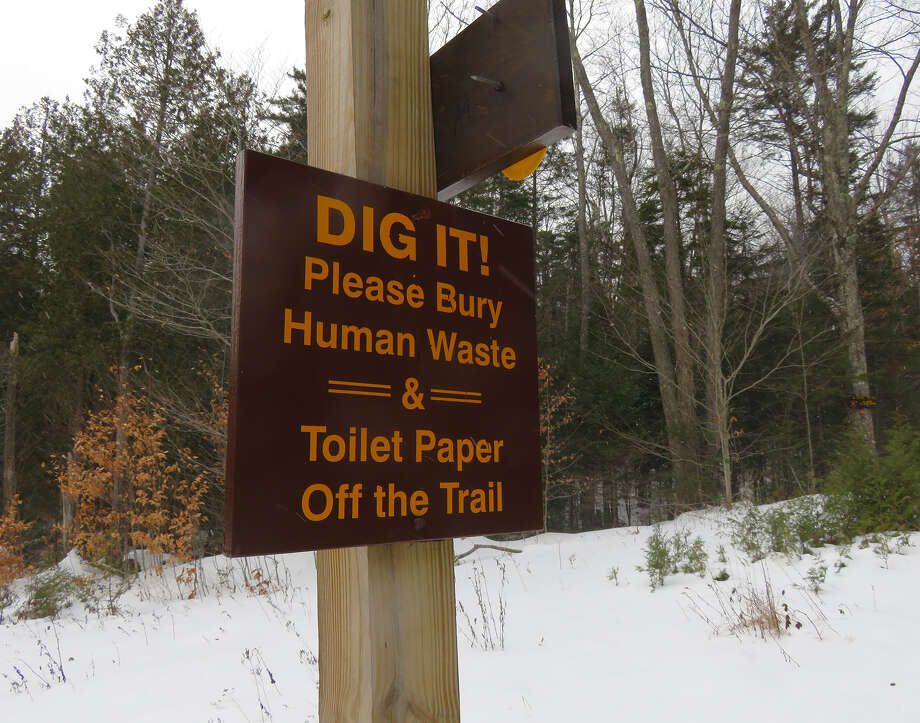State land needs rangers
Published 9:52 pm, Thursday, March 22, 2018
It's time to look forward to the spring blooms: the trillium, the trout lily and the toilet paper blooms.
When the weather warms, trail-side toilet paper blooms appear on popular hikes in the Catskills and Adirondacks. Some hikers take "bio breaks" too close to the trail and then don't bury their waste. The result? Toilet paper blooms.
Ah, nature.
It's become popular to say things like toilet paper blooms and lost hikers are the result of "overuse" in the mountains, but I'm not crazy about the term. Some mornings, I walk barefoot down the stairs and step on an errant Lego block. When I'm done cursing, I wouldn't say the stairs were "overused," I'd say they were "misused."
As I get older, I'm wary of saying things used to be better, because it's a trap. There have always been problems and always been challenges. One of the current problems is that we're living in a more horizontal age. Peer groups of less experienced hikers have more ways to connect and more of them are deciding to go out in the woods. Make no mistake, this is a good thing.
The downside to this good thing is that sometimes best practices aren't passed down in a horizontal age like they were in a vertical age. Hiking clubs used to mix experienced hikers with newer ones and knowledge was exchanged.
Which bring us to rangers or more accurately, our lack of forest rangers. Fewer rangers are on the wrong side of an equation that isn't adding up. The state is acquiring more land and spending more money promoting tourism (which leads to more hikers), all while ranger presence is becoming thinner.
Rangers are not backcountry magicians who will solve every problem, but education has been one of their historic roles. They will often tell you that hikers they talk to are hikers they don't have to rescue later. With fewer rangers and more rescues, they are becoming less about education and more of a search and rescue unit. We've become too much about triage and not enough about preventive care.
Small towns in the Adirondacks get the problem. Last fall, several Adirondack towns passed resolutions urging the state to hire more rangers. These towns know the problems first-hand because it's often their volunteer rescue squads and fire departments who go out in support of rescues.
There isn't an unlimited budget, and in many ways, New York has done it the hard way. There are not many other states trying to do what we do: own and manage big tracts of land like we have in the Catskills and Adirondacks.
With some exceptions, most other states in the country have left that role to the federal government. Their highest peaks and wild places are the property of Uncle Sam. New York, on the other hand, has one of the smallest percentages of federal land in the country. Things could have been different as the idea of an Adirondack National Park was floated in the 1960's.
I'm glad there is no Adirondack National Park and I'm proud of what we have, as flawed as it is. When the state acquires new land, it holds public hearings and solicits comments. The results aren't always what we hope for, but it has the feeling of democracy and it's ours.
State ownership of wilderness is cumbersome and expensive because there's a cost for being the boss. The ranger shortage is one cost we've shirked for too long.
I subscribe to several outdoor magazines, the kind that have run advertisements for the Adirondacks in the past. For the most part, these magazines are based in the western U.S. and their coverage is often biased toward that part of the country. This past winter was an exception: I received a copy promising a story about the Adirondacks.
The story wasn't about the hundreds of miles of great paddling or cycling, or the visually stunning hikes above tree line and the long-distance backpacking trails. Instead, the story was about toilet paper blooms. How the Adirondacks are infested with toilet paper blooms. Let's hope the state plants something better soon.
hterns@timesunion.c-om • 518-454-5780 • http:/blog.timesunio-n.com/outdoors/
